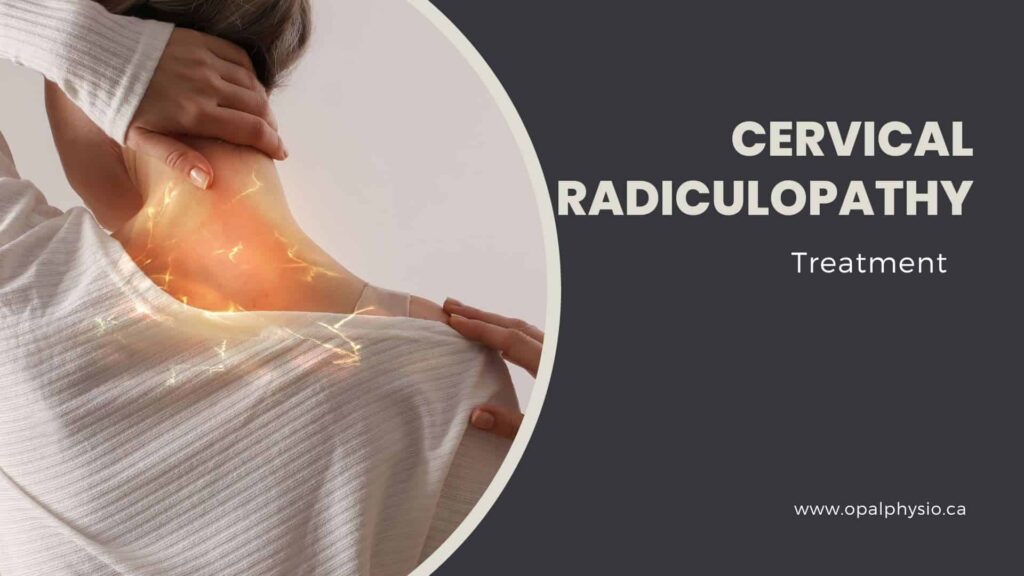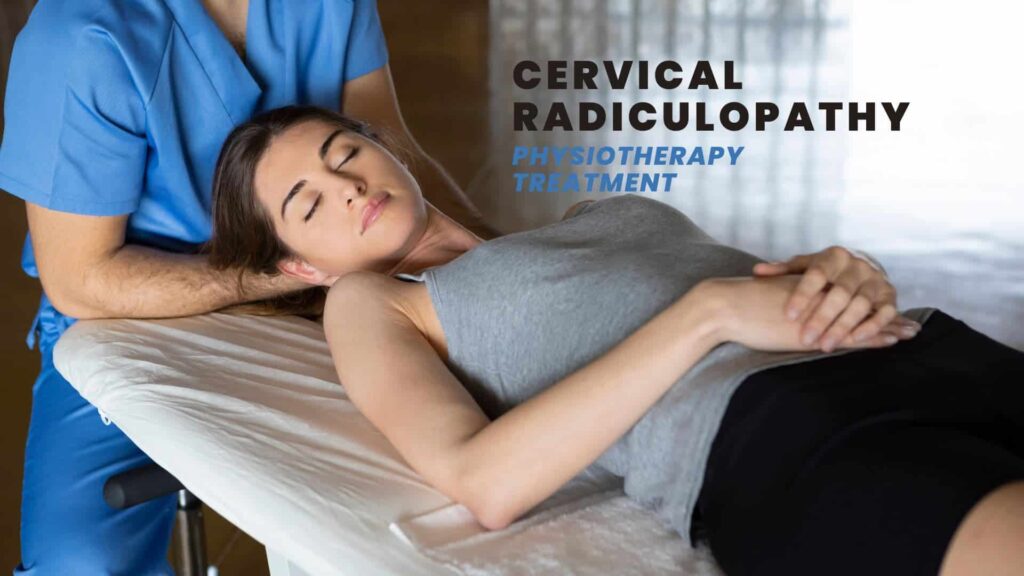Cervical Radiculopathy
Cervical radiculopathy is characterized by pain and/or sensorimotor deficits due to the compression of one or more cervical nerve roots. These nerves carry signals from the brain and spinal cord to muscles and organs throughout the body.
A common cause of cervical radiculopathy is repetitive stress to the neck region, which typically happens over many days or weeks. Other causes include trauma, such as car accidents, sports injuries, and work-related injuries. It can also result from various causes, such as disc herniation, degenerative changes in the spine, and arthritis, which causes pressure on the nerve roots.
Cervical Radiculopathy Treatment in Langley
Opal Physio offers comprehensive treatment for cervical radiculopathy in Langley. Our experienced physiotherapists develop personalized treatment plans that may include manual therapy techniques, targeted exercises, postural education, and pain management strategies. Our clinic takes a holistic approach, focusing on addressing the root cause of symptoms rather than just alleviating pain.
Treatment options may incorporate cervical traction, strengthening exercises for the neck and shoulder muscles, stretching, and ergonomic advice to improve posture and reduce nerve irritation. Our goal is to relieve pain, improve mobility, and help patients return to normal activities as quickly and safely as possible. This multimodal approach aims to provide both short-term symptom relief and long-term functional improvements for those suffering from cervical radiculopathy in the Langley area.

What is a cervical spine?
The cervical spine comprises seven small bones called vertebrae in the neck. These bones protect the spinal cord and nervous system. The cervical spine has many functions, including supporting the head, protecting the spinal cord and providing balance. When the cervical spine is injured, it can lead to neck pain.
What is cervical radiculopathy?
Cervical radiculopathy is a common condition that affects the cervical spine. It can be caused by trauma, inflammation or degeneration of one or more discs in the neck. The pain associated with this condition may be mild to severe, affecting your ability to perform daily activities.
Causes of cervical radiculopathy pain
There are several reasons why someone could experience neck pain. Some common causes include:
- Wear and tear changes in the spine (arthritis): Age-related degenerative changes in the spine can lead to pinched nerve, as they cause inflammation and compression of the nerve roots.
- Herniated disc: A herniated disc occurs when the soft inner material of a spinal disc protrudes through its outer layer, potentially compressing or irritating the nearby nerve roots. This is more common in younger people and can result from sudden injuries or trauma.
- Degeneration and bone spurs: Degenerative changes in the spine can lead to the formation of bone spurs, which can impinge on the nerve roots and cause cervical radiculopathy.
- Foraminal narrowing: Foraminal narrowing, also known as foraminal stenosis, occurs when the bony openings (foramina) through which spinal nerve roots travel become narrowed, typically due to arthritis or degenerative changes in the spine. This can compress the nerve roots and lead to cervical radiculopathy.
- Trauma or injury to the neck: Injuries to the neck, such as those sustained in car accidents or sports, can cause damage to the cervical spine and result in cervical radiculopathy.
Symptoms of cervical radicular pain
The symptoms of cervical radicular pain, also known as cervical radiculopathy, can vary depending on the affected nerve root. However, common symptoms include:
- Pain: Sharp or burning pain that starts at the neck and travels down the arm in the area served by the damaged nerve.
- Numbness: Reduced sensation or numbness in the fingers, hand, or arm.
- Tingling: A “pins and needles” sensation in the fingers, hand, or arm.
- Muscle weakness: Weakness in the arm, shoulder, or hand muscles.
- Weakened reflexes: Impaired or lost reflexes in the affected arm or hand.
- Neck pain: Pain in the neck area, which may increase with certain neck movements, such as extending, straining, or turning the head.
It is important to note that cervical radiculopathy symptoms typically affect only one side of the body and may present in various combinations or as a single symptom.

Physiotherapy for cervical radiculopathy treatment
Physiotherapy is an effective treatment for cervical radiculopathy; in many cases, it can completely resolve symptoms. A physiotherapist will develop an individualized treatment plan based on the initial evaluation findings. The treatment plan may include:
- Pain management: Over-the-counter nonsteroidal anti-inflammatory drugs (NSAIDs) are usually the first medications tried to relieve inflammation related to pinched nerves in the neck.
Cervical manual traction: Physiotherapists may use manual cervical traction to relieve pressure in the neck area. - Range of motion exercises: Physiotherapy can help improve the range of motion in the neck and strengthen the muscles. To manage cervical radiculopathy, a physiotherapist may use various treatments, such as stretching exercises and joint mobilization techniques.
- Strengthening exercises: A physiotherapist will work on functional exercises to help you return to your job, sport, or other daily activities. These exercises may include strengthening the neck, shoulders, and arm muscles.
- Posture and ergonomic training: A physiotherapist can teach you to maintain proper posture while sitting, playing sports, exercising, or lifting heavy objects to prevent future episodes of cervical radiculopathy.
- Education: A physiotherapist will provide information about pinched nerves in the neck, their causes, and how to manage symptoms. They can also teach you how to prevent future episodes of cervical radiculopathy.
In most cases, cervical radiculopathy responds well to conservative treatment, including medication and physical therapy. If symptoms do not improve after 6 to 12 weeks of treatment, surgery might be considered 1. It is essential to consult with a healthcare professional to determine the best course of treatment for your specific condition.
Cervical radiculopathy can be debilitating, but with the right physiotherapy treatment, many patients can experience significant relief from their symptoms and return to normal activities.
If you are experiencing symptoms and looking for cervical radiculopathy treatment near you, call us today to schedule a consult with our physiotherapist to develop a personalized treatment plan that addresses your specific needs to help you regain your quality of life.
